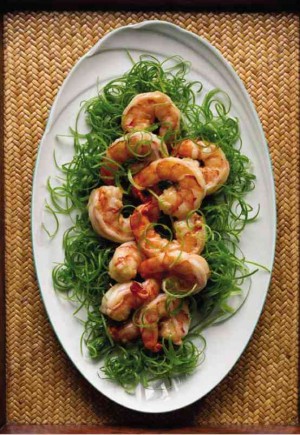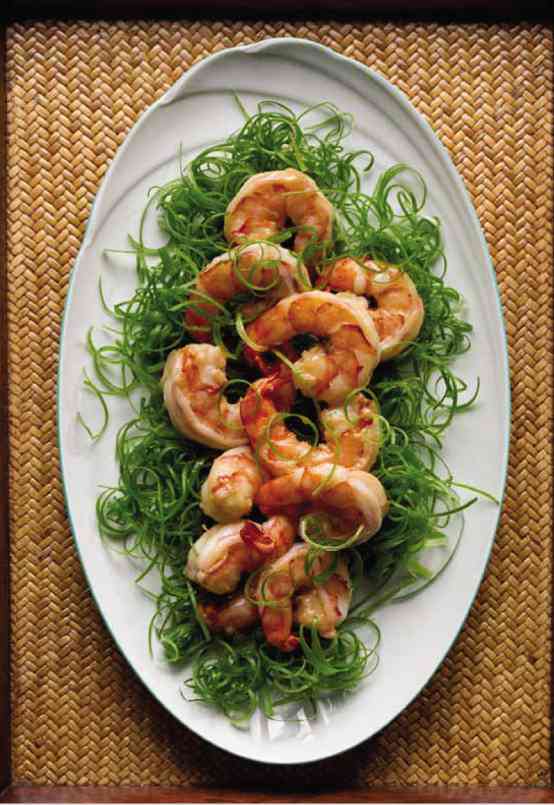
Reading a digital file of the book “My Angkong’s Noodles,” I thought how delightful that some of the questions about Chinese cooking, Chinoys (Chinese-Filipinos) and Binondo are finally answered.
Written in a breezy, quite funny way even if the information was dead serious research by Clinton Palanca, the book must be the more informal outcome of his proposed PhD topic at Oxford University—the similarity between Filipino and Fujian cooking.
Most of the Chinese immigrants in the Philippines came from the Fujian province in the southeast coast facing Taiwan. Palanca noted how the region was a “backwater” compared to Guandong, which became the new port in the area and its cuisine (called Cantonese) became the known “Chinese” food throughout the world. In a way, this book is a rediscovery of Palanca’s roots, of a cooking he described as mainly “subtle flavors and light broths that are the cornerstone of southern Fujianese cuisine.”
It was Neal Oshima who sent me the digital file because he photographed many of the dishes. There are more than 100 recipes of Chinoy food (not Hong Kong, Beijing or Shanghai) that should make professional cooks and wannabes like me happy. Ginny de Guzman styled the food, which included a guide to wrapping ma tsang (dragon boat parcel) using bamboo rather than banana or lotus leaves.
The pictures are appetizing and may make you want to eat or cook, and Palanca can be hysterically funny when writing about procedures. The steamed pork hash, he wrote, “must be slapped with the vigor and drama of a telenovela climax.” Of the recipes, it was family meals where Palanca found the most difficulty because no one wanted to cook the too simple “parsimonious” meals. Somehow people tend to think that everyday food isn’t worth noticing or writing about, when these dishes comprise one’s culinary heritage.
Similarities of ‘humba’ and ‘adobo’
Of those family meals, humba is the one that strikes a chord with me because it is now part of Filipino cooking. Humba, explained Palanca, “refers to a cooking method (braising) as well as to a finished dish… it has many variants; some would say, as many as there are cooks.” It sounds so much like our adobo, which is also a form of braising, and, yes, it has so many variations with many provinces and families claiming theirs is the best.
One guest who attended the book launch held Saturday at Robinsons Magnolia asked me why the humba (hong ba) recipe didn’t have the black beans and peanuts of the Leyte humba. Didn’t those ingredients make it Chinese? Took me a while to consider that but then when a dish is adapted, something else goes into the mix of the original. And sometimes the name may be the same but the final dish comes out different.
An example is the ngo hiong which is also known as kikiam. In Cebu, ngo hiong is a lumpia (spring roll) filled with ubod (coconut pith), though some say that it can contain singkamas (jicama) or bamboo shoots. The flavoring is five-spice powder and the texture is in the fried wrapper which apparently has breadcrumbs bound together by eggs.
But ahm in both languages is rice porridge with more water, given to babies in lieu of milk to cure the runs. And ang kak is the same red yeast rice mixed into rice that will ferment and become buro. It was also amusing to read the Chinese names of two dishes that sound so similar to how Pinoys call them: Lun Pia Shiong Hai (lumpiang Shanghai) and Tao Kua Ba (tokwa’t baboy).
The book, however, has more than recipes. The essay “Comida China” by the late Doreen Gamboa Fernandez points out the many Chinese influences on Filipino food. Jeffrey Yap traces the history of Ysla de Binondo through precolonial times to the years of Spanish, British and American conquests.
But it is always the personal angle that will make for interesting reading. Of Binondo, Palanca wrote of how it “was such a tight-knit community that anyone who tried undercutting or was trying to steal clients was quickly rooted out and ostracized.” And in “My Food, My Identity,” he weaves tales of his home life with that of early Chinese immigrants, family cooking especially by his father whose New Year dish of oyster paste from the hometown is always served with an incantation: “May good men come forward to the table, and our enemies be far away.”
Mealtime memories
Mara Coson writes about her angkong (grandfather) Henry Sy in “The Quiet Man.” This “man of few words” was in charge of Sunday lunches for a long time and it was known among us food writers that he would market at Seaside on Roxas Boulevard. Those meals, Coson recalls, were “wonderfully mundane and memorable.”
Rafael Ongpin brings us to Binondo restaurants where his father, Jimmy, brought his family for Sunday lunches. Some have closed like See Kee and Smart Panciteria. While those were an integral part of his growing up years, he wondered whether he could bring his own children to the old streets and restaurants in Binondo after having been brought up to eat at the new Chinatown of Greenhills.
“My Angkong’s Noodles” is published by Elizabeth Yu Gokongwei who, in her notes, dedicates the book to “our immigrant mothers and grandmothers” whose family meals is what they pass on to the future generations, dishes that she hopes will be cooked instead of just remaining as beautifully documented pages.
This book, for me, is worth having because Chinoy cooking is part of Filipino culture and it answered two questions that have puzzled me for years. Why are the peanuts served before a Chinese restaurant meal always tasty and tender and how are they made? Is the pork liver with snow peas (cha ti qua) really Chinese?
The book will be available at bookstores by November.
E-mail [email protected].









































